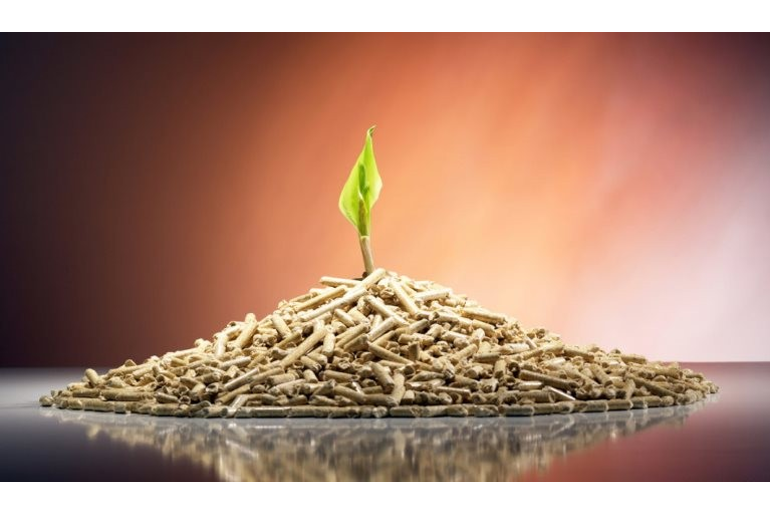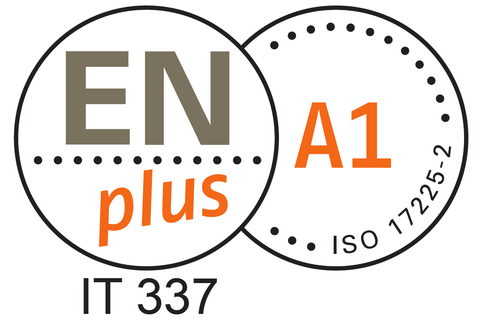Studio americano NFC - il pellet non inquina quanto energie fossili
Studio sull'impatto dei gas serra emessi nella combustione di pellet di legna in confronto alle forme di riscaldamneto con combustibili fossili.
The Northern Forest Center, a New England-based forestry advocacy group, recently released a study that analyzed the greenhouse gas (GHG) emission impacts of heating buildings with state-of-the-art wood pellet boilers. The results found a number of environmental benefits to using wood pellets for heating. For example, analysis showed wood pellet fuel reduces GHG emissions by more than half compared to fossil fuels—54 percent compared to oil and 59 percent compared to natural gas.
For the investigation, NFC commissioned the Spatial Informatics Group-National Assets Laboratory to conduct a life-cycle analysis of wood fuels, compared to a life-cycle analysis of natural gas, propane and heating oil. SIG-NAL analyzed the largest forested area east of the Mississippi River known as the Northern Forest, a 30-million-acre stretch of land in northern Maine, New Hampshire, Vermont and New York. SIG-NAL used data specific to this region using a forest sector life-cycle assessment tool, U.S. Forest Service Inventory Analysis information about forest management and data from regional pellet mills. The study surveyed 10 mills (one of which did not respond) serving the Northern Forest to find out the type and source of wood going into their pellets, the fuels used in manufacturing the pellets and more. The information was averaged to create a GHG profile for the Northern Forest pellets.
The results described in this summary were based on 2015 forest harvesting levels and pellet consumption, with the assumption that increased demand for pellet fiber is offset by reductions in other markets for no net increase in harvesting.
According to the study, on day one, using wood pellets for heat in the Northern Forest reduces GHG emissions by more than 50 percent compared to oil and natural gas. At the 50-year mark, GHG emissions from pellets dropped to 62 percent less than oil, 67 percent less than natural gas and 56 percent less than propane. The study found heating with oil produces 357 grams of GHG per kilowatt-hour (kWh) with no reduction over time, whereas heating with pellets produces 165 grams per kWh initially and drops to 135 grams per kWh by year 50.
“Now we can say unequivocally that heating with high-efficiency wood pellet boilers in the Northern Forest reduces greenhouse gas and helps us fight climate change,” said Rob Riley, president of the Northern Forest Center, in a statement. “When we use local, renewable wood pellets to heat, we’re reducing greenhouse gases emissions and supporting our region’s forest economy.”
SIG-NAL accounted for a number of factors in its analysis. The mix of energy sources used in pellet production at nine of 10 mills in the region was used. The composition of wood pellets was also accounted for, because the ratio of sawdust and mill residuals to low-grade wood affects the GHG impact of pellets. Harvest levels, tree growth and overall forest dynamics and natural impacts that can affect unharvested trees and result in release of stored carbon were added as important factors.
“No one had previously done an assessment that is based on the actual conditions in the Northern Forest,” said Maura Adams, program director. “Context really matters in climate impact studies, so we commissioned a study to assess the greenhouse gas impact of using wood pellets for heat in the Northern Forest based on real data for our region. Now we know the results: heating with wood pellets is far better than heating with oil or natural gas in the Northern Forest.”
NFC noted in their study that measuring the GHG impact of any heating fuel requires accounting for all emissions in production and use of the fuel, including all the GHG associated with producing the fuel (extracting or harvesting, manufacturing or processing, transportation); GHG emitted by the fuel when used; efficiency of the heat generation system being used; and carbon stocks in the forest such as live and dead trees (in the case of using wood).
The full methodology is available at http://nfcenter.org/2eiOr7U.
The study found that in 2015 almost half of the feedstock used for pellets produced in the Northern Forest was recovered waste from manufacturing some other wood product. Forty-four percent came from sawdust and other byproducts of forest product manufacturing; 56 percent came from low-quality pulpwood and small trees, usually the byproduct of harvesting for higher value lumber; and less than 1 percent from other sources, such as landscaping and municipalities.
The study NFC released also included a section on how changing markets make room for pellet production. “Across the Northern Forest, major traditional markets for low-grade wood, such as paper making, continue to shrink, creating an opportunity to shift pulpwood toward pellet manufacturing,” the study offered. In the Northern Forest, 11 pulp mills have closed since 1999, reducing demand for low-grade pulpwood, and between October 2013 and April 2016, Maine lost 4 million tons (36 percent) of its low-grade wood market.
The study emphasized that pellets are an important part of the low-grade wood market. “Steady markets for low-grade wood help landowners maintain forestland instead of converting it to non-forest uses such as development,” NFC included in its summary.
“The region has lost a lot of its traditional markets for low-grade wood,” Adams said. “Maine alone has lost 36 percent of its low-grade wood market in the last three years due to the closure of five paper mills. We can redirect that wood into pellet manufacturing and know that we’ll be reducing greenhouse gases.”
The 2015 forest inventory data showed that the live volume of timber in forests throughout Maine, New Hampshire, New York and Vermont is increasing, with annual forest net growth exceeding annual harvest. Net growth is estimated at 21.6 million cords annually and harvest is at 12.6 million cords per year.
NFC has a Modern Wood Heating program that has helped homeowners and businesses in Maine, New Hampshire, Vermont and New York install 130 wood pellet boilers, to date.

